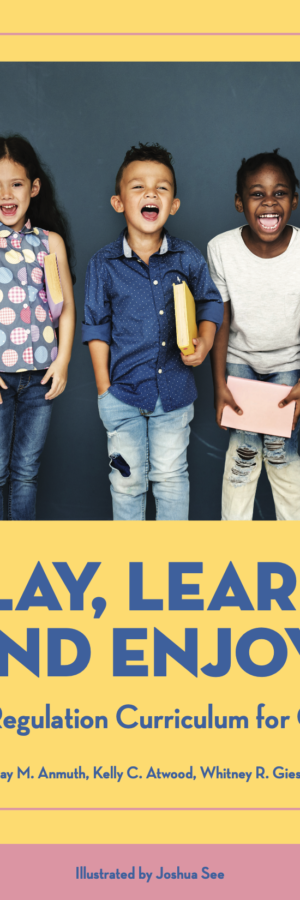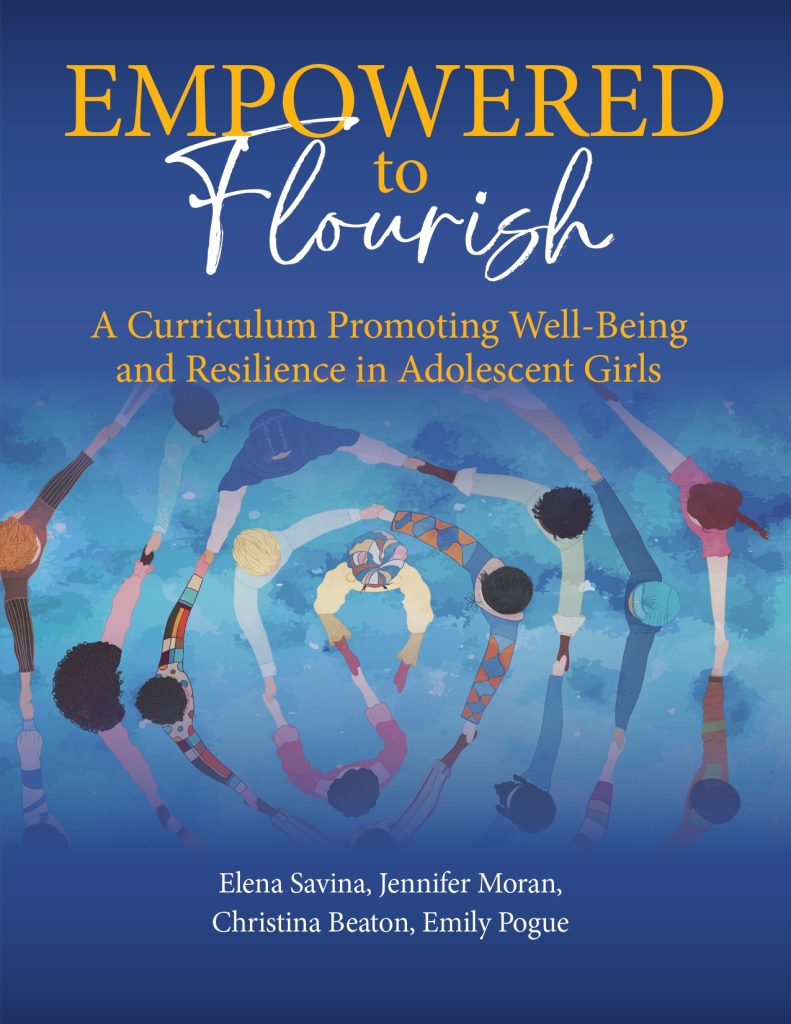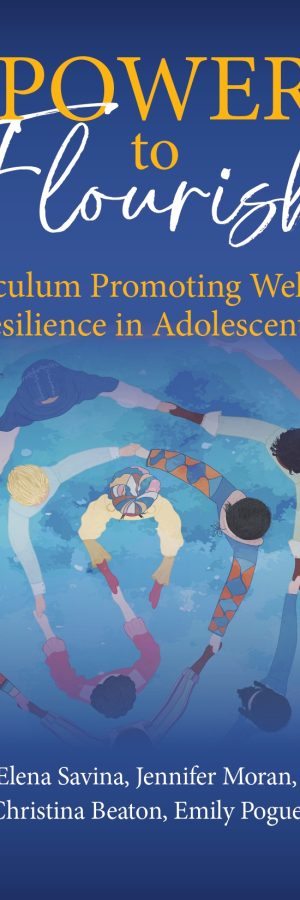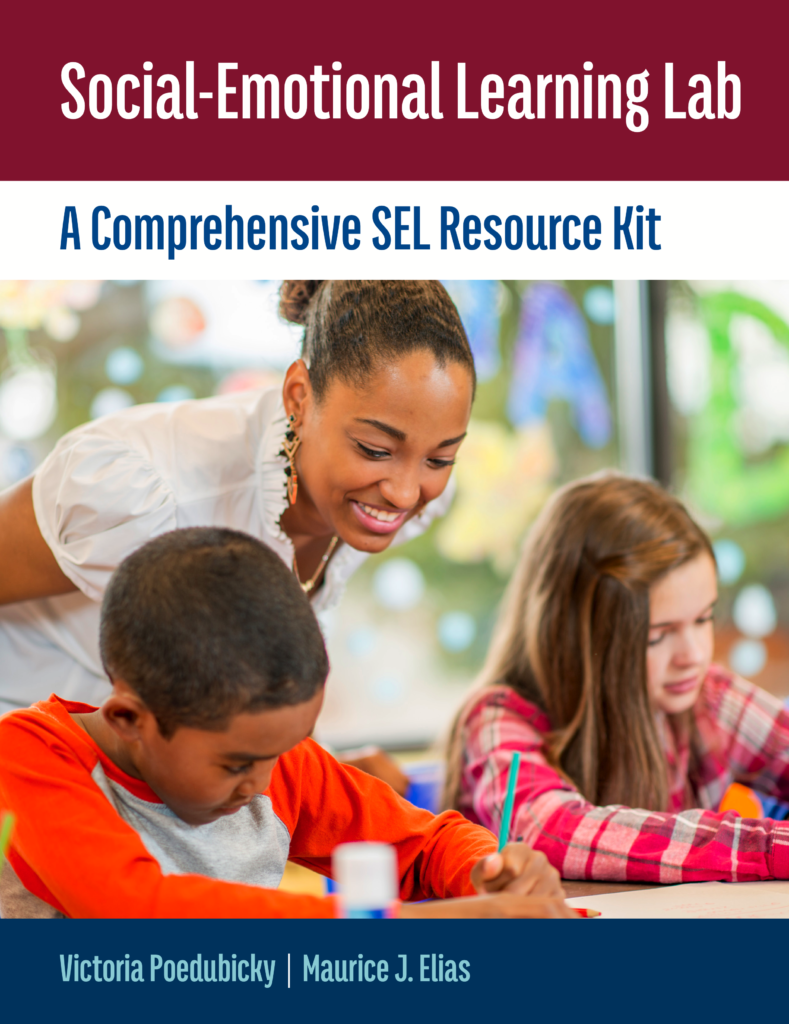For teachers, counselors and school psychologists, Play, Learn, and Enjoy! is a social-emotional learning curriculum for elementary school children that bridges self-regulation skills with social-emotional competencies.
This book covers a broad range of self-regulation and social skills including executive functioning (attention, working memory, and inhibition), strategic skills (time-management and planning), self-awareness, emotional regulation, decision-making, communication, and collaboration with others.
The curriculum is designed in a thematic, game-like format where children, together with story characters, go on imaginary trips into the wilderness. For example, they travel to mountains, a desert, a rainforest, and the Arctic. They take a riverboat trip, go ocean sailing and snorkeling. The curriculum consists of self-regulation games, social stories, collaborative problem-solving and planning activities, movement games, and mindfulness. It includes audio tracks and reproducible worksheets. This curriculum can be implemented in group counseling, after-school programs, and summer camps.
In this episode of Prosocially Yours shown below, host Elizabeth Hess interviews two of the authors of Play, Learn, and Enjoy!, Dr. Elena Savina and Dr. Virginia Larsen. Dr. Savina says: “The best context for young children to learn self-regulation is games. We designed those self-regulation games that train working memory, attention, and impulse control so these are developmentally appropriate activities to learn self-regulation skills in elementary school years.” Many insights are shared as the co-authors discuss their research and their goals for creating this great counseling resource.
Praise
“Play, Learn, and Enjoy! embeds numerous skills in each lesson and provides a variety of activities to keep children interested during the session. By having a focus ‘location’ to drive each lesson, children don’t realize they are learning and practicing skills! This curriculum is a ground-breaking tool for children to improve their emotional-regulation skills.” – Erin C. Stone, BCBA-D, LBA, Autism and Behavior Services Coordinator
“The authors have assembled a fun set of activities designed to enhance social-emotional and executive functioning in elementary school children. The use of themes to tie all the elements together is very creative and will be very engaging for children.” – Daniel C. Miller, PhD, Director, School of Neuropsychology Post-Graduate Program, KIDS, Inc.
Book Review
“Play, Learn, and Enjoy! serves as a stand-alone curriculum that provides a solid foundation for teaching self-regulation skills to children. This book begins by describing self-regulation, including the individual neurocognitive self-regulation functions (i.e. inhibition, voluntary attention, and working memory), with a review of relevant research. The curriculum incorporates play, movement, mindfulness, and social stories into research-based activities that promote self-regulation…. Though the curriculum is designed for school psychologists, school counselors, or occupational therapists, it’s user-friendly, step-by-step descriptions make it appear that it could be easily implemented by other school staff without much difficulty. I look forward to using it with my 6-to 8-year-olds, as well as with my older students with cognitive impairments.” – Amanda Schimmoller, NCSP, Communiqué, published by The National Association of School Psychologists (NASP)
Dr. Elena Savina, author of Play, Learn, and Enjoy! A Self-Regulation Curriculum for Children (PLE), explains the developmental, cultural, and educational aspects of self-regulation in children in this exclusive Author Spotlight interview.
Why did you decide to design the PLE curriculum?
We have mounting evidence that self-regulation skills are essential for classroom behavior and academic success. Kids with better self-regulation can pay attention in the classroom, control their emotions and behavior, and follow teacher’s instructions. They also have better relationships with teachers which further contributes to their learning. Early elementary school is a period when self-regulation develops very rapidly; however, both teachers and mental health professionals notice that many kids have difficulty with self-regulation. As a result, they fall behind academically and develop behavioral and emotional problems. We also know that kids who do not have good self-regulation skills in early elementary school will struggle academically in middle school. Therefore, teaching children self-regulation is important to promote learning and prevent behavioral problems and school failure.
What makes the PLE curriculum different from other curricula?
There are several features which make the PLE curriculum unique. First, it is a comprehensive curriculum which integrates self-regulation and socio-emotional skills. These skills include neurocognitive functions (attention, working memory, and inhibition,), emotion regulation, planning, time management, communication, and collaboration with others. Second, it is grounded in the Vygotskian theory. The hallmark of PLE is interactive activities which promote verbal self-regulation, planning, and collaboration skills. Third, the curriculum is designed in a thematic format where children take imaginary trips to the wilderness which makes activities contextual and engages children’s imagination. The curriculum contains carefully designed session plans with each session targeting both self-regulation and socio-emotional skills. Finally, the curriculum incorporates movement activities which, as we are learning today, are very important for advancing self-regulation skills.
What makes the PLE curriculum attractive for children?
We ran this curriculum with several groups of children and each time we received very positive feedback. Kids are drawn to the idea of imaginary trips to different places, they take their “trips” very seriously, and want to be fully prepared for them. This format makes the curriculum very engaging and allows easy integration of activities which train self-regulation skills directly, while working on attention worksheets. Another attractive feature is movement activities. We were very lucky to collaborate with a renowned sound designer, Dr. David Cottrell, who made very realistic animal and nature sounds. Finally, kids love working together on collaborative activities. It is a real pleasure to see how their abilities to listen to each other and coordinate their perspectives and actions improve with each session.
What advice can you give teachers or mental health professionals who implement this curriculum?
It is important to understand which skill is promoted by each activity. In this case, the group leader can be flexible and put a stronger emphasis on activities that train specific skills relevant to particular children in the group. The introductory chapter provides a detailed description about skills each activity targets. Another important thing to keep in mind is that the group leader should carefully scaffold children’s collaborative activities. It is best to provide more scaffolding at the beginning, but eventually let children negotiate among themselves and intervene only if children have difficulty working together. Finally, I recommend the group leader to join kids in their trips and have fun!
Visit the author page for additional information on Dr. Savina.
Reproducible worksheets for this title are available on our downloads page.







